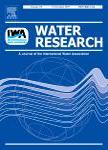版权所有:内蒙古大学图书馆 技术提供:维普资讯• 智图
内蒙古自治区呼和浩特市赛罕区大学西街235号 邮编: 010021

作者机构:Univ Michigan Civil & Environm Engn 2350 Hayward StGG Brown Bldg Ann Arbor MI 48109 USA Univ Michigan Mech Engn GG Brown Lab 2350 Hayward St Ann Arbor MI 48109 USA
出 版 物:《WATER RESEARCH》 (Water Res.)
年 卷 期:2017年第126卷
页 面:88-100页
核心收录:
学科分类:0830[工学-环境科学与工程(可授工学、理学、农学学位)] 08[工学] 0815[工学-水利工程]
基 金:REFRESCH program at the University of Michigan National Science Foundation [DGE 1256260]
主 题:Sensor networks Data-driven modeling Smart water systems Combined sewer
摘 要:The recent availability and affordability of sensors and wireless communications is poised to transform our understanding and management of water systems. This will enable a new generation of adaptive water models that can ingest large quantities of sensor feeds and provide the best possible estimates of current and future conditions. To that end, this paper presents a novel data-driven identification/learning toolchain for combined sewer and stormwater systems. The toolchain uses Gaussian Processes to model dry-weather flows (domestic wastewater) and dynamical System Identification to represent wet weather flows (rainfall runoff). By using a large and high-resolution sensor dataset across a real-world combined sewer system, we illustrate that relatively simple models can achieve good forecasting performance, subject to a finely-tuned and continuous re-calibration procedure. The data requirements of the proposed toolchain are evaluated, showing sensitivity to spatial heterogeneity and unique time scales across which models of individual sites remain representative. We identify a near-optimal time record, or data age, for which historical measurements must be available to ensure good forecasting performance. We also show that more data do not always lead to a better model due to system uncertainty, such as shifts in climate or seasonal wastewater patterns. Furthermore, the individual components of the model (wet- and dry-weather) often require different volumes of historical observations for optimal forecasting performance, thus highlighting the need for a flexible re-calibration toolchain rather than a one-size-fits-all approach. (C) 2017 Elsevier Ltd. All rights reserved.